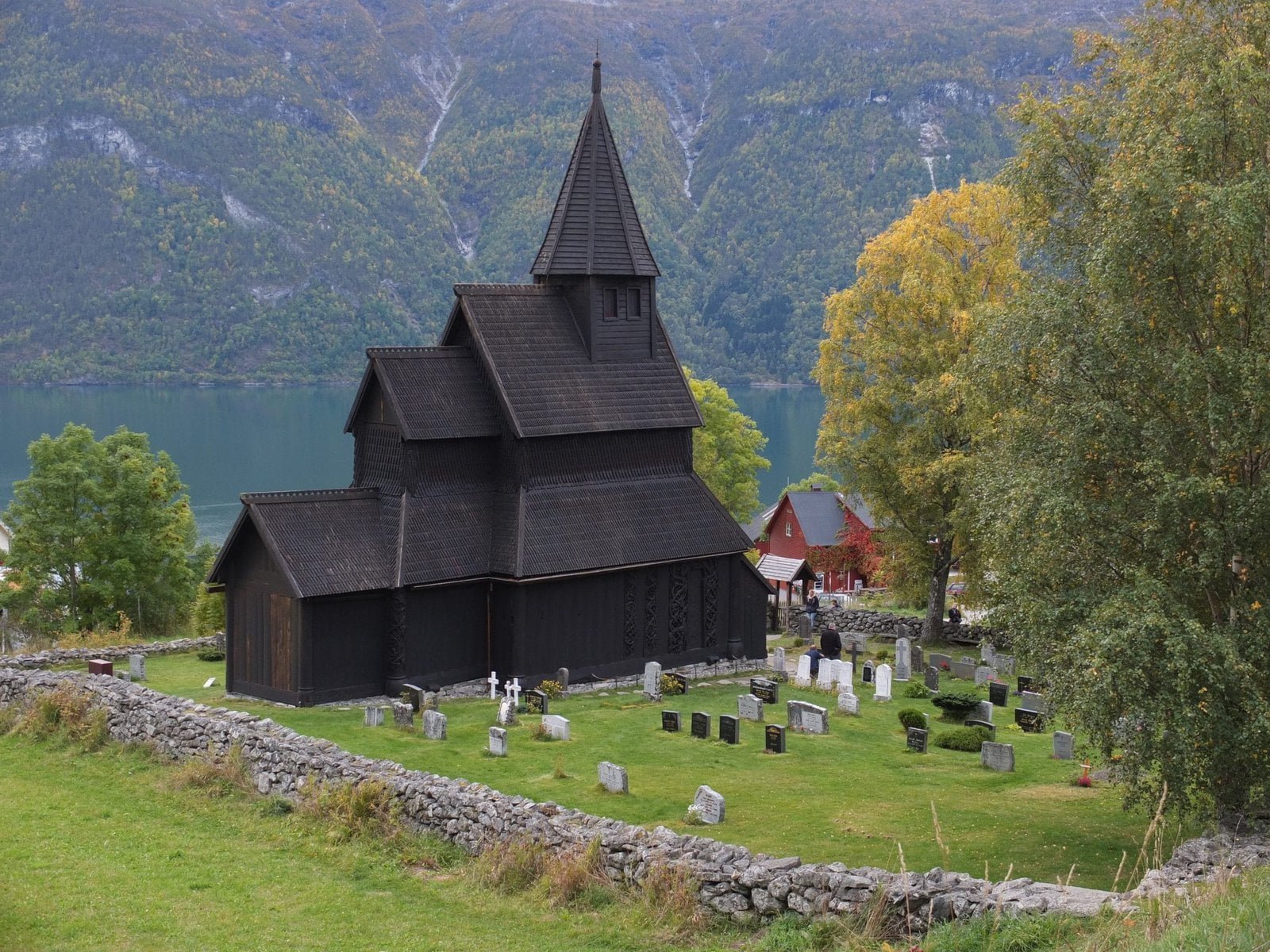Grain and water
Porridge, flatbread, and lefse – a soft grain-based flatbread – were staple foods on the old Norwegian farm. Historically, today’s oven-baked bread was almost non-existent.
Many think of porridge as a tasteless substance, often associated with poverty. In its simplest form, it consists of crushed grain and water.
Grain has been available since the beginning of agriculture; in Scandinavia some 6,000 years ago. During the early farming-millennia, the Norwegians cultivated barley and oat. These are hardy plants and well-suited for the colder Norwegian climate.
Food for feasts
Richer versions of porridge have been served and cherished throughout Norwegian history – both in everyday life and as a treat at life’s many feasts and celebrations: Christmas, baptisms, weddings, funerals, and more.
To add flavour and nutritional value, the traditional farmer’s wife experimented with the ingredients available to her: coarsely and finely ground grain, sweet milk, sour-milk, sour-cream, butter, salt, syrup and much more.
The variations of Norwegian porridge are as many as there are districts and inventive cooks in this long-stretched and diverse country.
The Norwegians also served porridge when celebrating the end of the growing-season – and when the community came together to help their neighbours – dugnad; for example, when building a barn.
Today, the Norwegians typically eat porridge with a layer of sugar and cinnamon on top – and a chunk of butter in the middle, melting and blending in.
According to old beliefs, a lump of butter shaped like a cross protects against evil powers.
Served several times a day
The mistress of the traditional Norwegian household usually served porridge several times a day. She prepared a generous portion in the morning – and served it hot for breakfast – and thereafter, usually cold. With cold porridge, often came some warmed-up milk.
Slices of cold porridge were also fried in fat and served with other foods – like the modern-day potato.
When travelling, people brought cold porridge with them in their rucksacks – or in a wooden box. So did field labourers, working far from home.
Eating from the same bowl
On the old Norwegian farm, it was common for all to eat the porridge from the same bowl or dish. The cook placed the dish on the table, and everybody tucked in from all angles, using their very own wooden spoon.
When they had finished eating, they licked their spoon clean and stuck the handle in between two logs in the wall of their log house home.
No lumps
Getting the porridge just right is a skill – and preparing it in a large pot over an open fire can be demanding work. The cook prided herself on not having any lumps in the finished product.
In connection with weddings and other large gatherings, people called in particularly skilled cooks to make sure that the food was of the highest quality. Women from smaller farms or cottages often took on extra work on occasions such as these. A good cook was a well-respected lady.
The almond for Christmas
A Norwegian Christmas tradition from more recent history, is to add one single almond to the pot before serving. The person who gets the almond usually wins a prize – and is the recipient of much attention.
Over the years, many a child – with a great sense of disappointment – has watched a sibling find the much-coveted almond.
Olaug Løken – in her cookbook from 1897 – links this tradition to New Year’s Eve. The one who gets the almond, will be the happiest of them all in the coming year.
Source: Jansen, Johanne – Moe, Elisabeth. Norsk mat. Norges Bondekvinnelag – J.W. Cappelens forlag 1965.











